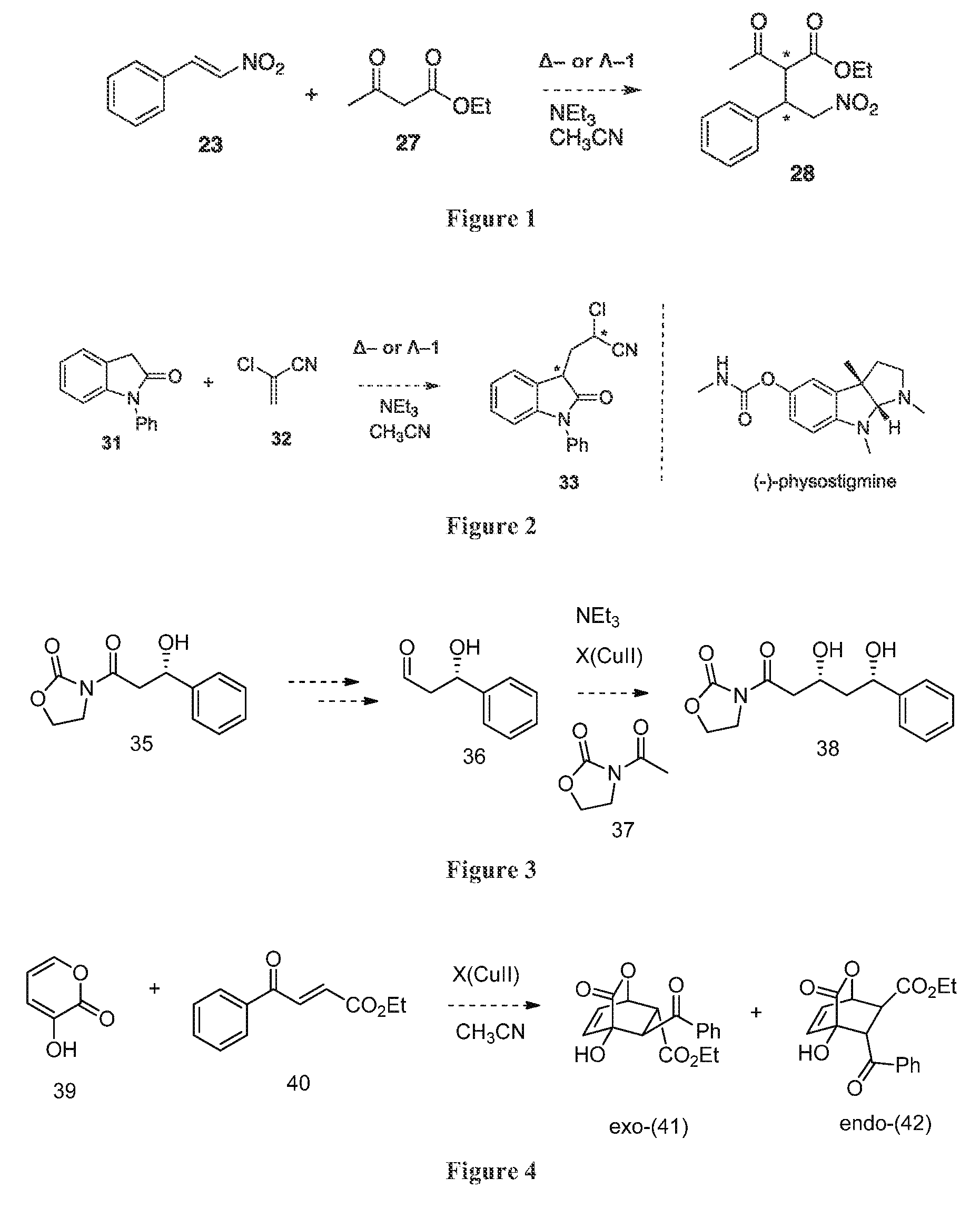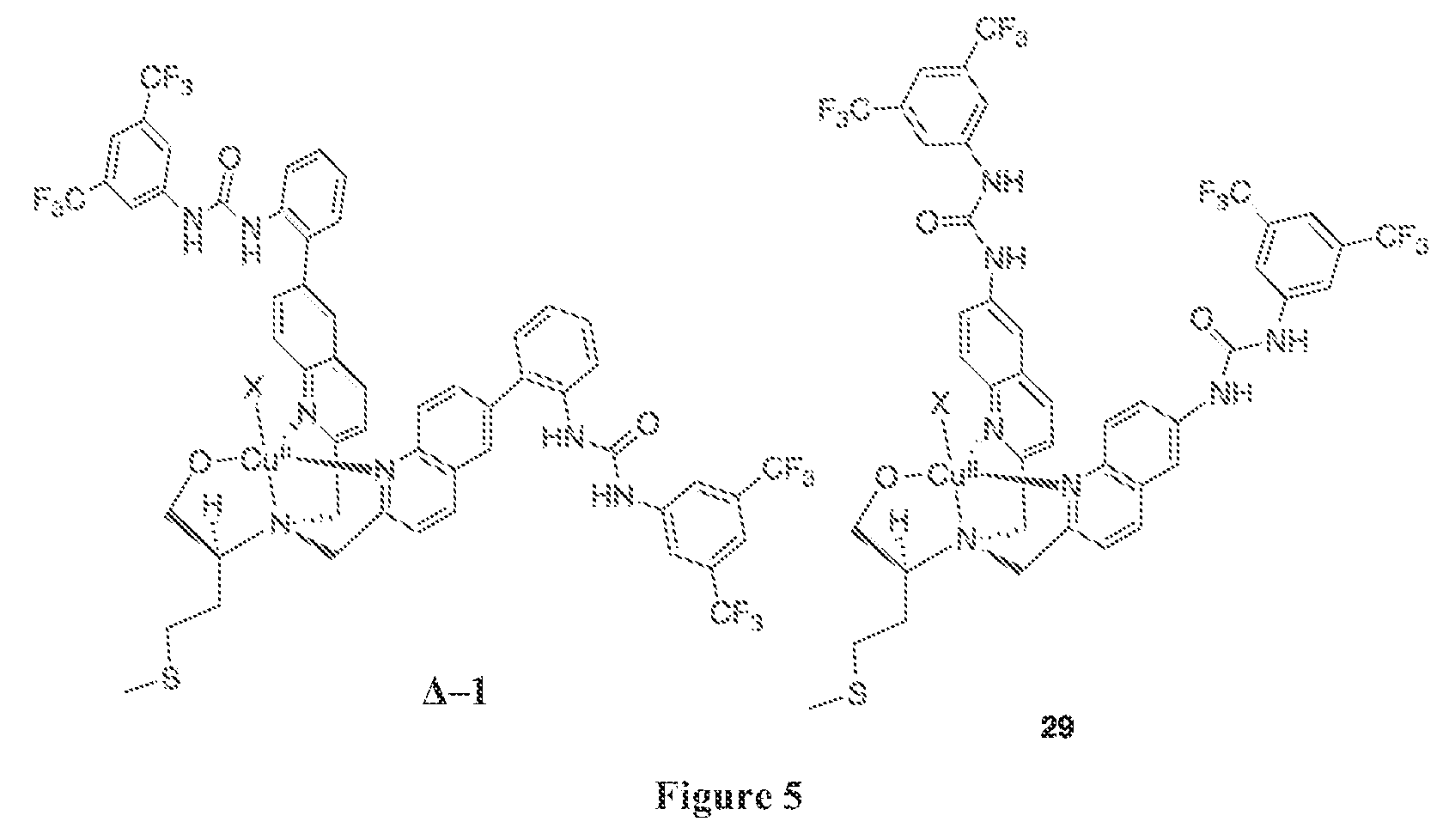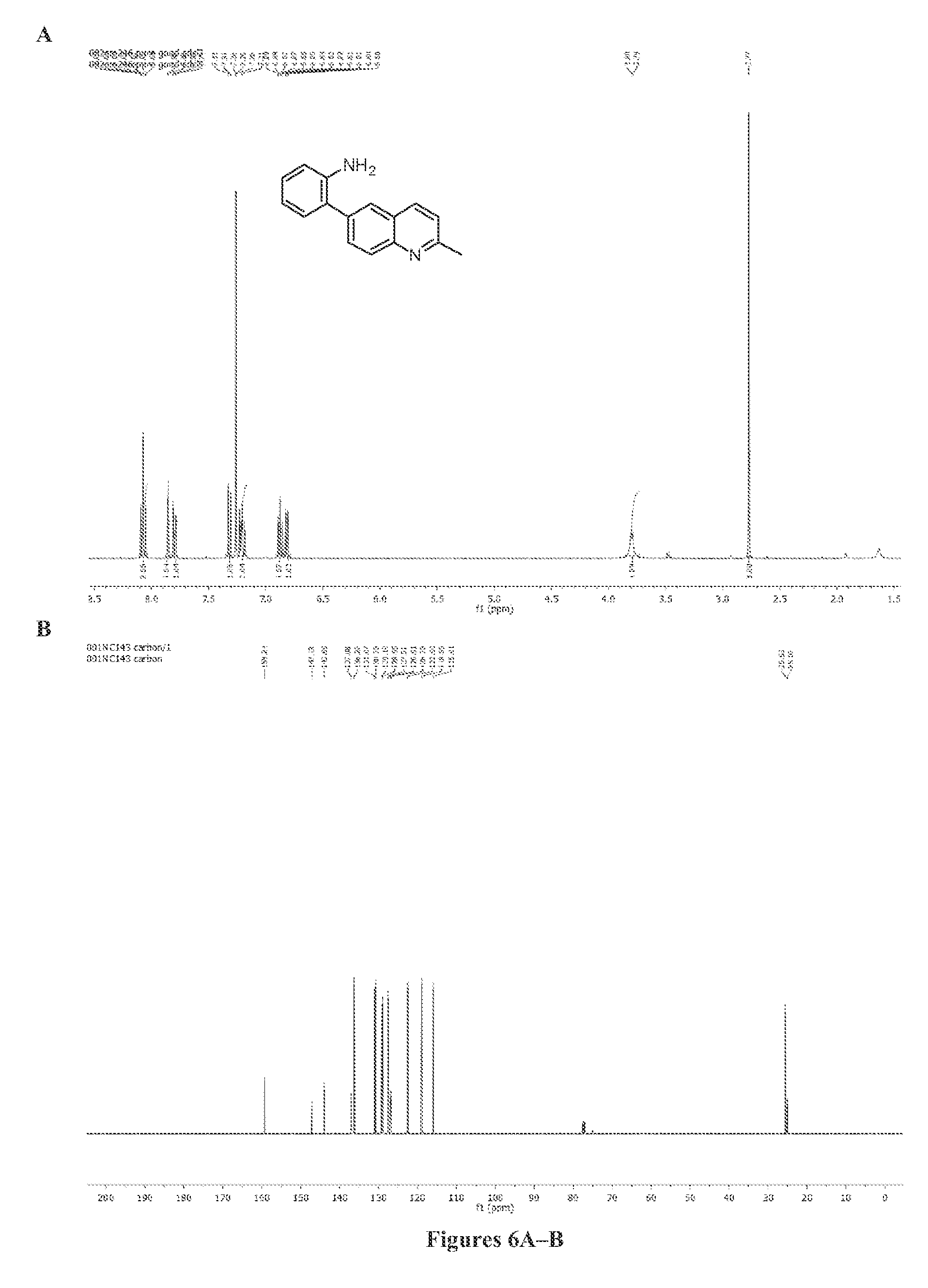Asymmetric catalysts
a catalyst and asymmetric technology, applied in the field ofambidextrous asymmetric catalysts, can solve the problems of limited availability of catalysts that are derived, scarce production of unnatural enantiomers, and elusive rational design of catalysts with ready triggers to modulate or invert enantioselectivity, so as to achieve the effect of enantioselectivity of the michael addition product still being reversed
- Summary
- Abstract
- Description
- Claims
- Application Information
AI Technical Summary
Benefits of technology
Problems solved by technology
Method used
Image
Examples
example 1
General Information
[0093]All commercial materials were purchased without further purification. Small-scale reactions were carried out in 20 mL Fisher Scientific disposable scintillation vials. Other reactions were carried out using oven-dried (160° C.) glassware. Solvents were purchased from Aldrich with Sure-Seal bottles. 1H-NMR and 13C-NMR were obtained using a Bruker AC 400 (400 MHz) NMR. 13C-NMR were obtained at 100 MHz on the same NMR. All chemical shifts are reported in parts per million (ppm) with reference to solvent residual peaks. The ESI mass spectra were obtained with an Agilent 1100 Series Capillary LCMSD Trap XCT Spectrometer using acetonitrile solutions of the products. Circular dichroism spectra were acquired with an AVIV Model 202SF CD spectroscope. Enantiomeric excess was determined on an Agilent 1200 series HPLC with Daicel Chemical Industries, LTD. Chiralpak OD (0.46 cm×25 cm) column.
example 2
Synthesis of Catalyst Ligand
[0094]The catalyst ligand was synthesized as shown in Scheme 1 below.
[0095]
Synthesis of Amine 5
[0096]A 50 mL round bottom flask was charged with 1 g (4.5 mmol) of 6-bromo-2-methylquinoline, 1.25 g (5 mmol) bis(pinacolato)diboron, and 20 mL of toluene. The mixture was degassed using argon for 10 minutes. The quantities 330 mg (0.45 mmol) of Pd(dppf)Cl2 and 1.3 g (13.5 mmol) of potassium acetate were then added and the reaction was heated at 90° C. under inert argon atmosphere for 18 hours. The reaction was allowed to cool to room temperature before filtering through a pad of silica. The solvent was then removed in vacuo. The quantity 1.19 g of crude was obtained and used without further purification for the Suzuki coupling. To 1.19 g of borylation product was added 605 μL (5.4 mmol) of 2-bromoaniline and a mixture of 30 mL dioxane / 10 mL (1.3M) aq. K3PO4. The mixture was then purged using argon. The quantity 274 mg (0.3 mmol) of Pd2dba3 and 160 mg (0.6 mmol...
example 3
Synthesis of Ambidextrous Catalyst Δ / Λ-1
[0100]Ambidextrous catalyst Δ / Λ-1 was synthesized as shown in Scheme 2 below.
[0101]
Synthesis of Catalyst Δ-1
[0102]A solution of ligand 8 (100 mg, 0.09 mmol) in 210 μL of MeOH was stirred at room temperature for 5 minutes before a solution of CuII(ClO4)2.6(H2O) (40 mg, 1.0 mmol) in 300 μL of MeOH was added. The reaction was stirred at room temperature for one hour until a blue precipitate formed. The solid was obtained by filtration and washed with diethyl ether. The product was then recrystallized twice using acetonitrile to obtain [CuII(8)](ClO4)2.2(H2O) (abb. as Δ-1) (101 mg, 80%) as a light blue solid. Analytical data for title compound: LRMS (EI): 1172 (M+), 622, 505 Anal. Calcd (mass %) for C55H47Cl2CuF12N7O13S: C, 46.90; H, 3.36; N, 6.96. Found C, 46.66; H, 2.99; N, 6.95.
Synthesis of Catalyst Λ-1
[0103]The quantity 197 mg (0.18 mmol) of ligand 8 was dissolved in 10 mL CH2Cl2 and purged with N2 before placing into a glovebox. After 5 minut...
PUM
| Property | Measurement | Unit |
|---|---|---|
| temperature | aaaaa | aaaaa |
| ionization potentials | aaaaa | aaaaa |
| hydrogen bond | aaaaa | aaaaa |
Abstract
Description
Claims
Application Information
 Login to View More
Login to View More - R&D
- Intellectual Property
- Life Sciences
- Materials
- Tech Scout
- Unparalleled Data Quality
- Higher Quality Content
- 60% Fewer Hallucinations
Browse by: Latest US Patents, China's latest patents, Technical Efficacy Thesaurus, Application Domain, Technology Topic, Popular Technical Reports.
© 2025 PatSnap. All rights reserved.Legal|Privacy policy|Modern Slavery Act Transparency Statement|Sitemap|About US| Contact US: help@patsnap.com



